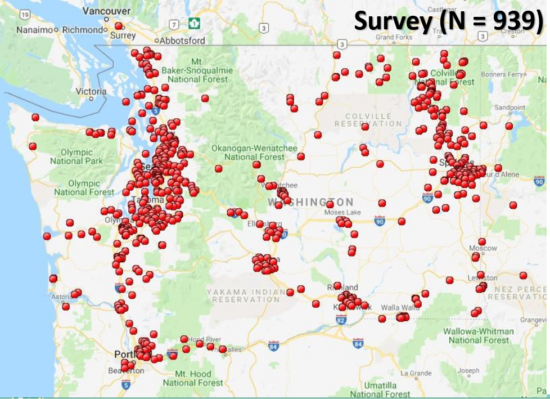
It’s Public Comment Season In The P.N.W.: Sea Lions, Wolves, Grizzlies
Editor’s note: Since this blog was posted Monday, Oct. 28, WDFW has announced that the public scoping period for future wolf management planning will extend through 5 p.m. Nov. 15.
As one public comment period closed last week, two others important to Northwest sportsmen will end soon as well.
Tuesday, Oct. 29 is when commenting wraps up on a proposal by the three Northwest states and several tribes to remove California and Steller sea lions in an expanded part of the Lower Columbia watershed, while this Friday afternoon is when the scoping period for postrecovery wolf management planning ends in Washington.

Last Thursday saw the second comment period on plans to recover grizzly bears in the North Cascades wrap up following several well-attended meetings in the region.
Following passage of the Endangered Salmon Predation Prevention Act by Congress last winter, IDFG, ODFW, WDFW and the Nez Perce Tribe, Yakama Nation and other tribal partners in the Columbia Basin put in for a permit that would allow removals of sea lions in tributaries with listed salmon and steelhead runs, as well as in the Columbia from river mile 112, around Washougal, up to McNary Dam.
Currently, sea lions are only being taken out in the mainstem at Bonneville.
It’s not a ultimate cure-all for all the woes Chinook, coho, summer-runs and other stocks face — many other species chew on them and fish habitat has been radically altered — but already the ability to remove the marine mammals is showing results at Willamette Falls.
According to a Bill Monroe article in The Oregonian late last week, sea lion predation of winter steelhead and spring Chinook there has dropped by as much as 75 and 55 percent, respectively, since Oregon received a federal permit.
ODFW took out 33 last winter and spring, and that has greatly increased the odds that the ESA-listed steelhead stock will not go extinct, “probably to less than 10 percent,” according to the agency’s Dr. Shaun Clement, Monroe reported.

To comment on the expanded program in the Columbia, go here by tomorrow.
As for Washington wolf management, 5 p.m. Nov. 1 is the deadline to register your thoughts as WDFW looks towards the next phase of the species’ recovery in the state.
There are two options, a scoping questionaire that asks for your age, sex, county of residence, whether you live in a rural, suburban or urban area, whether you identify as a hunter, livestock producer, outdoor recreationist or environmentalist, and a list to check off the topics most important to you in terms of wolf management.
That takes less than two minutes, but another option allows for more submitting more expansive thoughts.

When the Fish and Wildlife Commission met a week and a half ago, wolf managers updated them on how the scoping process was going through Oct. 17, and wolf hunting and wolf-livestock conflicts were the two most important topics among respondents, followed by wolf conservation and monitoring.
Translocation — moving nonproblem wolves from one part of the state to others — was the least important.
Rural residents and outdoor recreationists have been among those participating in the survey in the highest numbers.
Don’t believe your voice counts in public comment?
With WDFW proposing a blanket elimination of daily and size limits on bass, walleye and channel catfish in 146 lakes across Washington (most don’t have the latter two species, but the first are widespread), testimony heard by the Fish and Wildlife Commission at their October meeting had the citizen panel pushing back and asking for a more refined proposal from fishery managers as the state agency tries to follow a legislative directive to provide more forage fish for orcas.
